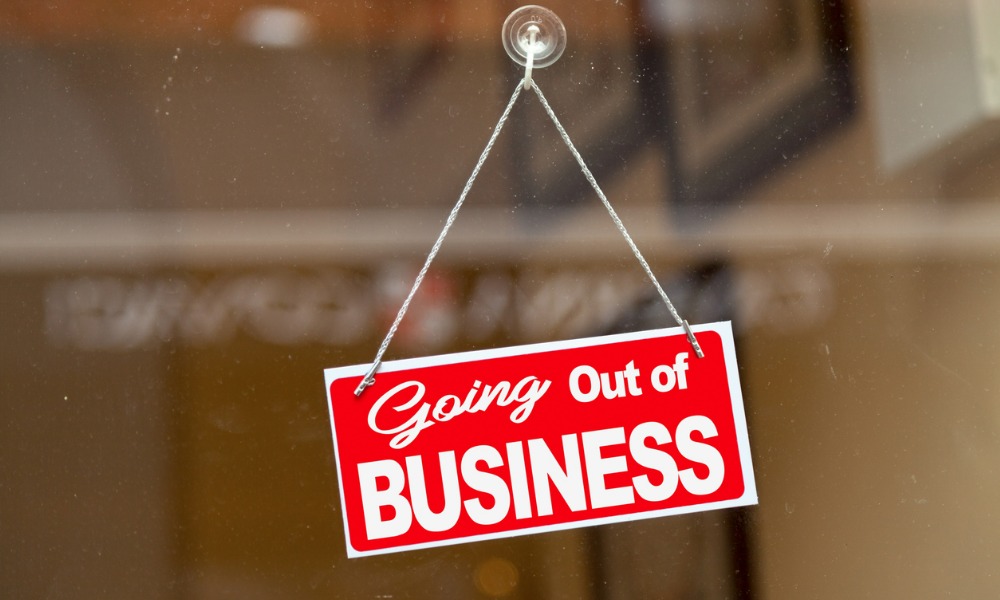Major banks are already moving back into normal collection rhythms following a massive drop in business turnover

A surprising trend that has come out of CreditorWatch’s monthly reporting throughout the pandemic has been the low level of insolvencies and court actions at a time of falling turnover. CEO Patrick Coghlan has long attributed this to the leniency offered by banks and the Australian Taxation Office during a time of economic uncertainty caused by lockdowns and border closures. But according to Coghlan, this leniency is soon due to end.
Speaking at the release of CreditorWatch’s Business Risk Index results for October, Coghlan said he didn’t expect the ATO to start winding back this leniency until April to June next year, but hinted banks could start to move earlier – a move that BRI data analyst James O’Donnell confirmed.
“The major banks are starting to move back to normal collections rhythms,” said O’Donnell.
He added that CreditorWatch expected to see an increase in the level of insolvencies over the next six months as a result. But this would not come as a flood, said Coghlan.
“The big narrative to everyone, whether it’s media, credit managers or debtors is not to be alarmed by it, but it’s going to happen,” said Coghlan. “A nice steady climb is what we want to see rather than a jump.”
One of the standout results from the October BRI was the massive drop in business turnover during October. According to the index, this plummeted by 37% year-on-year, following a commensurate drop of 34% in September. According to CreditorWatch, this was the largest contraction since the start of the pandemic
Responding to a question from MPA as to what was responsible for this drop, O’Donnell offered a simple explanation.
“It’s more or less because of lockdowns,” he said. “There are some sectors that are going OK, but the retail sector has more or less collapsed.”
Read more: The challenge of reopening after lockdown
Coghlan pointed to the steady decline that had already been occurring for some time before the pandemic hit Australian shores.
“Turnover was coming off coming into late 2019, early 2020 and there was a couple of reasons for that,” he said. “The economy wasn’t performing as well as it had been previously. We had an NSW and Federal election which slowed things down. We then had fires, floods and all sort of things like that which put a huge amount of pressure on businesses and the regions in particular.
“We then got hit by COVID. JobKeeper plumped it back up as the country opened back up through the end of 2020 into the early months of 2021. In March we saw that JobKeeper come off and there was an immediate downturn straight away. We had Melbourne going in and out of lockdown but there was a lot more free money going around because of stimulus. Then from June onwards we got hit by that Delta variant and that’s come right back off as well.”
Despite the drop in business turnover, the two maintained a positive outlook for the future.
“Over that period, business and consumer savings have gone up quite a lot,” said O’Donnell. “In terms of why we’re optimistic, the cash in the accounts of businesses and individuals is higher than it has ever been at the moment. That points to when we do open up there should be more spending and more business turnover.”
Another interesting trend highlighted by the index was the fact that the construction industry held the highest amount of payment arrears at 12.6% despite having a relatively low probability of default at 3.26%.
“The one thing we’ve said about construction is they are consistent,” said Coghlan. “If nothing else, they are consistently slow payers and typically that can blow out a bit over December and January as work slows or stops, and progress payments don’t come through.”
MPA asked how the construction industry would fare over the coming six months following recent disruption from COVID shutdowns.
Read more: Construction industry is at risk of losing smaller players
“There are a lot of challenges for the construction industry, the obvious ones being supply chain issues where they simply can’t get the materials required to perform the job,” said Coghlan. “I think the COVID restrictions have put pressure on them, but they will obviously be weaned off those restrictions which is a positive thing.”
O’Donnell said the health of the industry could vary by state, but that the data largely painted a positive picture.
“This actually might be correlated to the vaccination rates,” he said. “Potentially in certain areas like Queensland where there are lower vax rates there could be some issues.”



